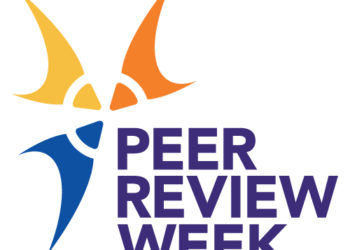
- Portrait of Robert Boyle via Wikipedia
As we explored in last week’s post, author lists in high-energy physics have become fantastically long. From the late 1600s to the 1920s, sole authorship was the unwritten rule, and the one-paper : one-author model worked well for attributing credit and responsibility. Since then, multi-authored papers have been on the rise in all fields, with the exception of the humanities, where sole authorship is still the norm.
The rise of authorship has been attributed to Big Science, scientific experiments that require collaboration and specialization of many individuals. Yet Robert Boyle’s experiments with the air pump in 17th century England required scores of individuals to build and operate equipment as well as to support the infrastructure that allowed Boyle to do his science. The only difference is that all of these individuals remained invisible to the record of science.
Only part of the rise in authorship is the result of Big Science. Part of the rise may be due to formally acknowledging those who would have remained invisible in the past. Another part may be attributing credit to those whose contribution may be symbolic, such as giving honorary authorship to the head of a department.
Authorship in science wasn’t always clearly defined. In the 17th century, science was the pastime of gentlemen-scholars who operated in a culture where virtue meant presenting oneself as a humble and selfless public benefactor [1]. On the other hand, plagiarism was common practice, and it was impossible to guard against intellectual theft when one did not assert oneself as the rightful author and owner. Henry Oldenburg, the first editor of the Transactions of the Royal Society, was instructed by Robert Boyle to begin dating when his letters were received because Boyle feared intellectual theft.
Robert Boyle, however, did not work alone. Some of Boyle’s equipment was designed and built by Robert Hooke, who was never acknowledged in Boyle’s manuscripts. Similarly, Boyle employed many technicians who were responsible for running the experiments, and who remain essentially invisible to the record of science [2]. Denis Papin, a skilled technician employed by Boyle, not only designed and built apparatus and performed experiments, but even wrote up the results for which Boyle claims sole authorship.
Denying authorship to Papin would seem morally wrong by today’s standards, but in the culture and values of 17th century England, we should view the relationship between Boyle and Papin as master-servant.
Servants might make machines work, but they might not make knowledge.[3]
When we think of an author, we often consider the inscriber of words, and yet author is more historically linked to the concept of authority, such as the one who authorizes or instigates, or the person on whose authority a statement is made.[4] Robert Boyle was considered the author of his experiments because he possessed the authority to make these knowledge claims.
Science has ceased being the providence of gentlemen-scholars and is now the domain of professional scientists, graduate students and technicians, all of whom depend on being acknowledged for their work.
The invisible are now being recognized.
Notes:
[1] Shapin, S. A social history of truth : civility and science in seventeenth-century England. Chicago, University of Chicago Press, 1994, p.184
[2] Shapin, S. 1989. The Invisible Technician. American Scientist 77: 554-563.
[3] Ibid, p.562
[4] “Author”, from The Oxford English Dictionary.
Discussion
3 Thoughts on "The Invisible Author"
For more on the nature of authorship and its relationship to plagiarism, see Johns, A. (1998). The nature of the book : print and knowledge in the making. Chicago, Ill.: University of Chicago Press.
![Reblog this post [with Zemanta]](http://img.zemanta.com/reblog_e.png?x-id=0cbc3adb-8805-4c66-a892-42ea570cfc84)


